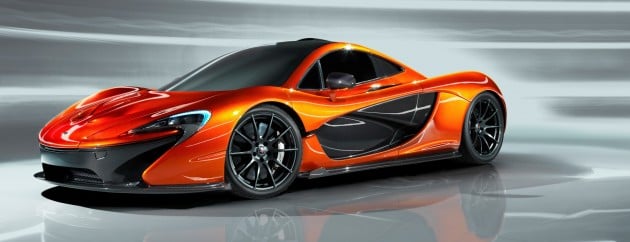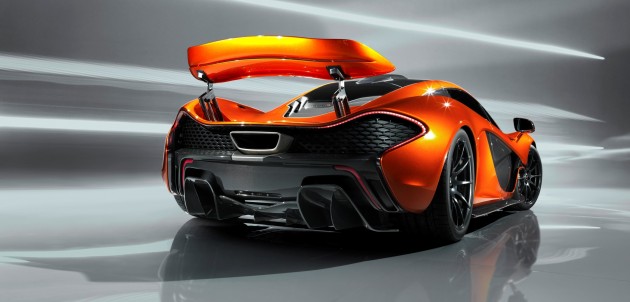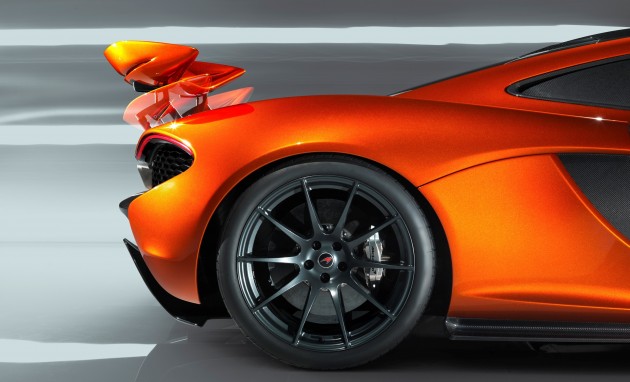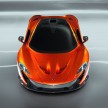Finally, the wraps have come off what is pretty much the sequel to the legendary McLaren F1 hypercar of the 1990s: the McLaren P1. It’s still a design study at this stage and has no interior, but the exterior won’t look much different from the production version, which is targeted to debut at next year’s Geneva motor show.
The Woking, Surrey-based company says that apart from being the initial project code, P1 is short for Position One – a salute to its 180 GP victories in 46 years in Formula One.
Indeed, it’s got huge shoes to fill – but we think you’ll agree it looks the part. Designer Frank Stephenson (who also did the McLaren MP4-12C) worked together with Simon Lacey (previously Head of Aerodynamics for the McLaren Formula One team) to result in the swooping curves and gaping-wide intakes you see here. “Everything is there for a reason,” said chief design engineer Parry-Williams. “True form improves function.”
Unlike the F1, it won’t have a central driving position, and a record-breaking top speed is not one of its priorities. “Our aim is not necessarily to be the fastest in absolute top speed but to be the quickest and most rewarding series production road car on a circuit,” said McLaren Automotive MD Antony Sheriff.
If it doesn’t break any outright speed records, we’re sure it’ll break many speed limits. The P1 will have a power-to-weight ratio of more than 600 PS per tonne (a Bugatti Veyron manages 530 PS per tonne). Assuming the P1 weighs the same as the MP4-12C, this translates to a 860 PS output.
The big rear wing is movable and also works as an airbrake. In drag reduction mode it lies flat, but can extend by up to 300 mm and change its angle of attack by as much as 29 degrees to give 600 kg max downforce (five times that of the MP4-12C) at “well below maximum speed.” Central to this is also its teardrop-shaped cabin, which allows more airflow towards the rear wing.
Complementing the rear wing are two under-body flaps ahead of the front wheels, which also move on their own through a 0-60 degree range to “boost handling, braking and straight line performance.”
Like its predecessor, the P1 uses a carbon fibre monocoque and roof structure safety cage concept called MonoCage – a development of the MonoCell used in the current 12C and 12C Spider, which saves weight and optimises airflow into the engine via a roof snorkel and air intake ducts. The exhausts are coated in a gold leaf heat shield – again, just like the F1. “Gold is the ideal metal to reflect heat, never mind its cost,” goes the press blurb.
That’s just as well, for Autocar says the P1 is likely to cost a hefty £700-800k (RM3.5-4 million) when it goes on sale next year.
Looking to sell your car? Sell it with Carro.




















wow!!!
Can’t afford, but the price is reasonable.
looks like something out of super GT
Ora ora ora!!!
this VS the next ferrari enzo , porsche 918 spyder , pagani huayra , koenigsegg agera
it’ll be the epic battle of Halo cars in 2013!